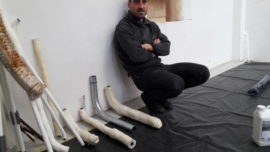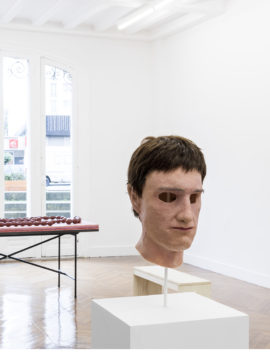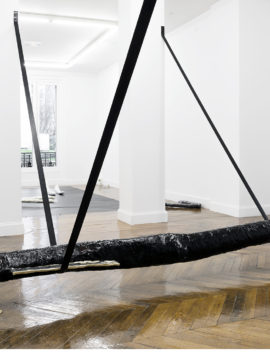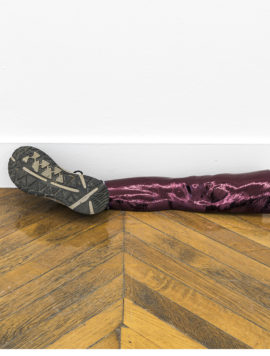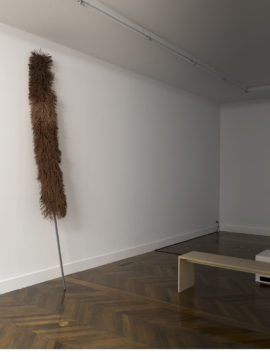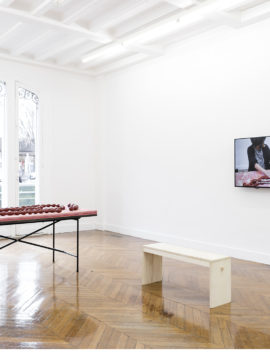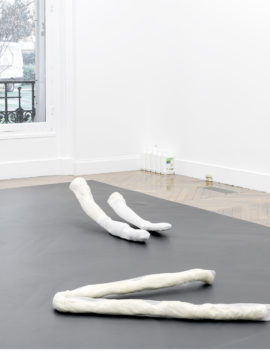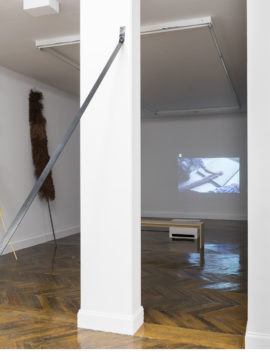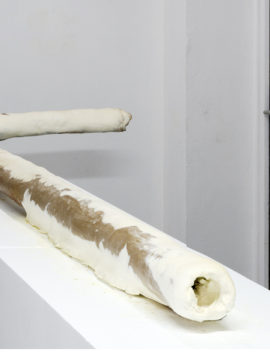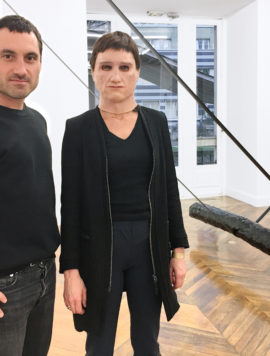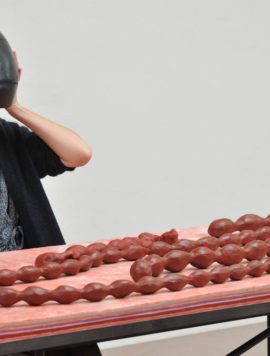My Tongue Does This to Me
Up until then my tongue just lay there in my mouth in a perfectly normal way. Then it got talked about and took on a certain weight and volume in my mouth. It became something special, partly visible and partly invisible, not completely a part of me and not completely belonging to me. “My tongue does this to me”: it’s also a forked tongue that makes itself heard before it makes itself understood, an independent creature gifted with speech, a transmitting instrument with its own technique. That tongue’s no longer as familiar to the mouth that is both its and mine.
“My tongue does this to me” is also the tongue that speaks of artworks. This is a tongue that is unlearning the language of a mediation focused on information. It develops a more obscure form of mediation intended to take literally Ludwig Wittgenstein’s maxim that “what can be said at all can be said clearly, and what we cannot talk about we must pass over in silence.”[1] It is not so much a matter of walling the work in with a mystical silence as of recognising the limits of linguistic clarity and finding ways of connecting with artworks in less comfortable, less familiar forms, and envisaging mediation as a sounding board. Hedwig Houben has designed instruments for this.
In the wake of the tongue this feeling of strangeness has made its way to the house that is home to the art centre: this house of dust, of stone, of… . At once staunch and hospitable, vulnerable and mutable, public and already inhabited, this house is neither completely mine nor completely yours. So come along and try out the tongue that abrades.
[1] Ludwig Wittgenstein, Tractatus Logico-Philosophicus, (1921), trans. D.F. Pears and B.F. McGuinness (London: Routledge & Kegan Paul, 1961), p. 3
around the exhibition
-
12/01/18
7pm - 10pm
-
13/01/18
4 pm - 6 pm
Listening session # 2: Félicia Atkinson, “First House of Echo”
-
20/01/18
4 pm - 6 pm
Listening session # 3: Félicia Atkinson, “First House of Echo”
-
27/01/18
4 pm - 6 pm
Listening session # 4: Félicia Atkinson, “First House of Echo”
-
01/02/18
7 pm - 10 pm
Films at Home: Sébastien Pluot presents Kim Ki-duk’s film, “3–Iron”, 2004
-
17/02/18
4 pm - 6 pm
Listening session # 5: Félicia Atkinson, “First House of Echo”
-
03/02/18
4 pm - 7 pm
-
17/02/18
4. pm - 6 pm
Listening session # 6: Félicia Atkinson, “First House of Echo”
-
01/03/18
7 pm - 40 pm
Films at Home: Félicia Atkinson presents Wim Wenders’ film, “Alice in the Cities”, 1974
-
08/03/18
7 pm - 10 pm
-
10/03/18
4 pm - 6 pm
Listening session # 7: Félicia Atkinson, “First House of Echo”
-
17/03/18
5 pm - 7 pm
